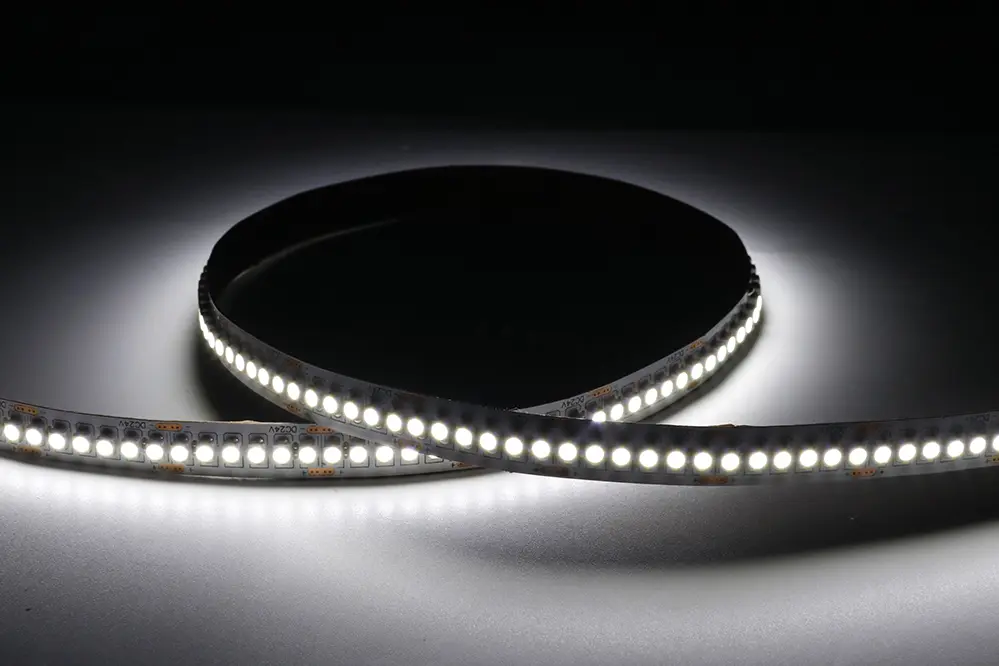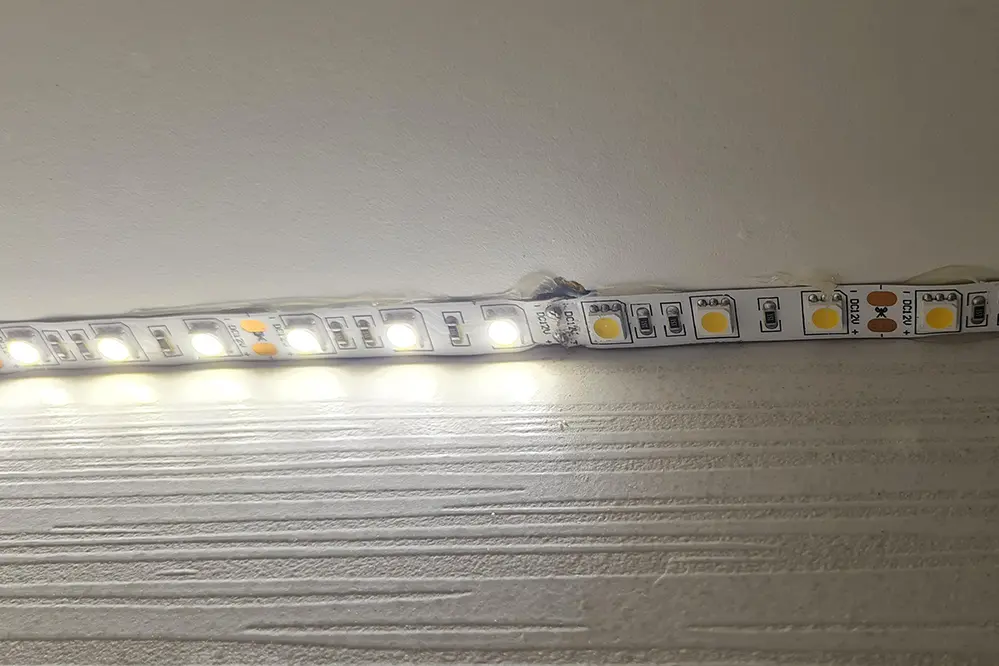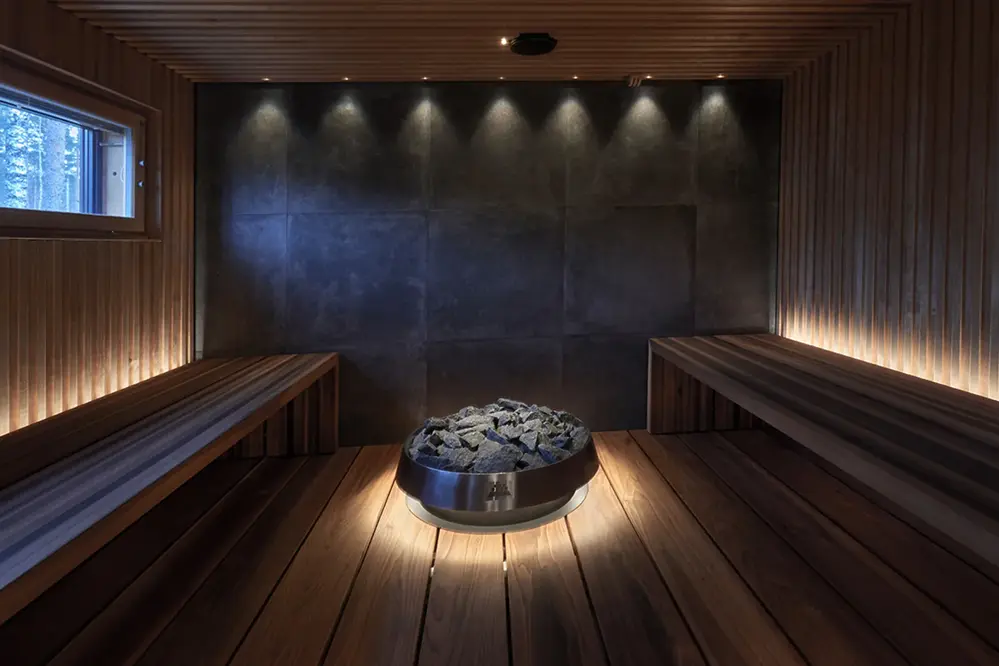Are you wondering about the safety of LED strip lights? Look no further! We have the expert insights and detailed guidelines to address your concerns and provide you with the confidence you need.
LED strip lights are safe to use when proper precautions are taken. From low voltage operation to minimal heat output, these lights offer a secure lighting solution. Read on to explore the safety features, installation best practices, and maintenance tips to ensure a safe and enjoyable experience with LED strip lights.
Discover the key safety features, learn about installation best practices, and find out how to maintain LED strip lights for optimal safety and longevity. Let’s dive deeper into the world of LED strip lights and put your safety concerns to rest.
Key Safety Features of LED Strip Lights
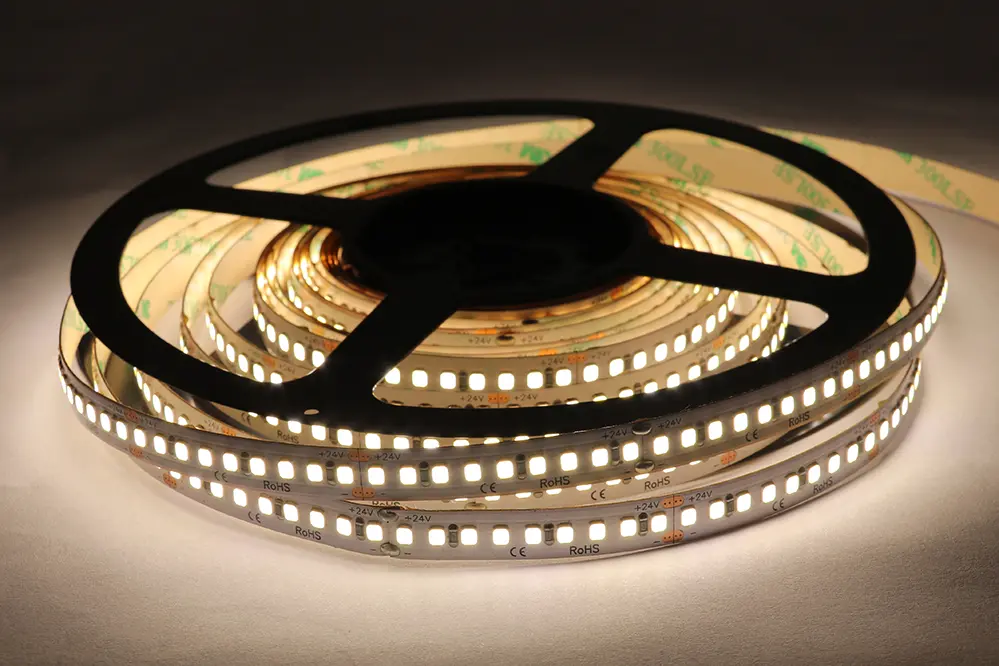
LED strip lights are designed with safety as a top priority. One of the key safety features of LED strip lights is their low voltage operation. Unlike traditional lighting sources that operate at higher voltages, LED strip lights typically operate at 12 or 24 volts. This significantly reduces the risk of electric shock, making them a safer option for both residential and commercial use.
In addition to low voltage operation, LED strip lights also produce minimal heat compared to traditional lighting sources. This is due to their energy-efficient design, which converts a higher percentage of electrical energy into light rather than heat. As a result, the risk of burns or fire hazards associated with overheating is greatly minimized.
To further enhance safety, it is important to select LED strip lights with protective coatings or enclosures. These coatings act as a barrier, safeguarding the components of the LED strip lights from moisture, dust, and physical damage. Moisture and dust can potentially cause electrical malfunctions or short circuits, while physical damage can compromise the overall performance and safety of the lights. By choosing LED strip lights with protective coatings or enclosures, you can ensure their durability and maintain safety standards.
Installation Best Practices for Optimal Safety
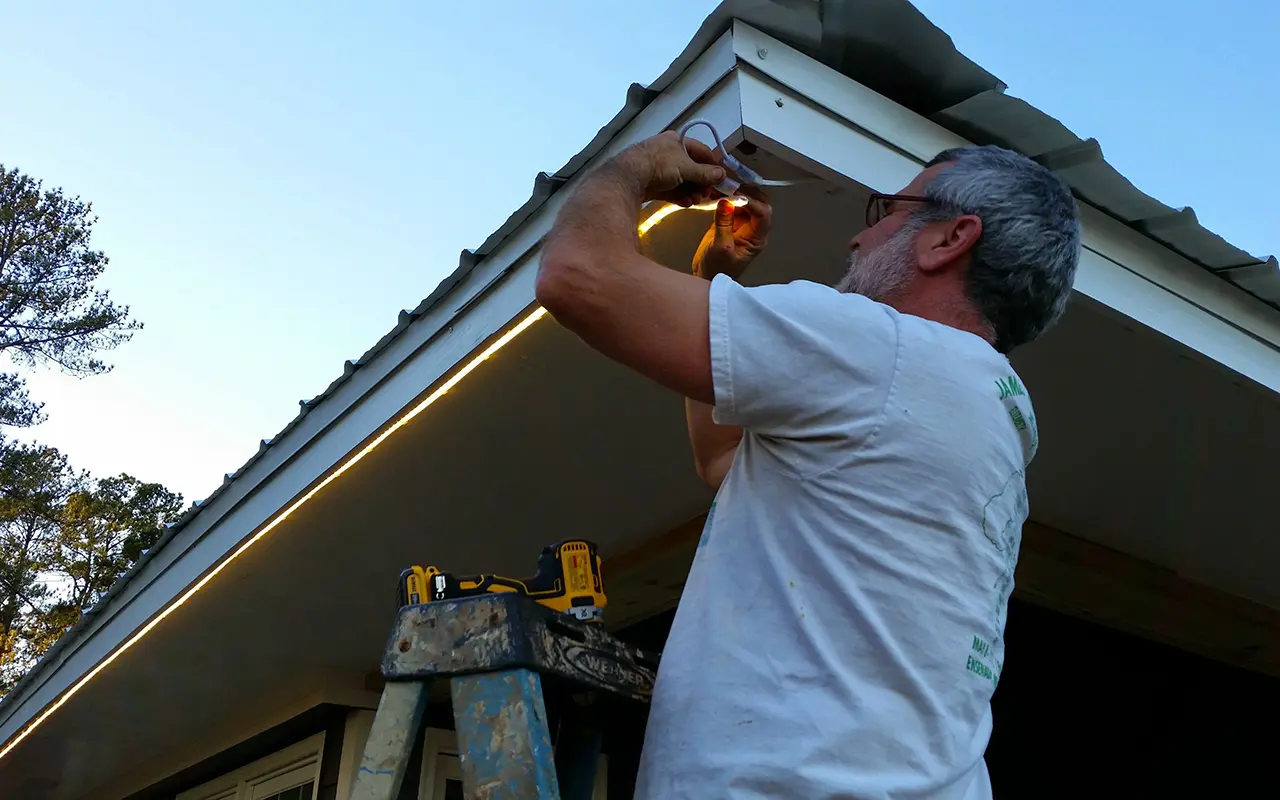
Proper installation is crucial to ensure the safe and efficient use of LED strip lights. Following manufacturer instructions and best practices is essential to minimize potential safety risks. Here are some key installation practices to consider:
- Select the Right Power Supply: When installing LED strip lights, it is important to choose a power supply that matches the voltage requirements of the lights. Using an incompatible power supply can lead to various issues, including overheating and potential safety hazards. Always refer to the manufacturer’s guidelines to determine the appropriate power supply for your specific LED strip lights.
- Use Correct Connectors: Properly connecting different sections of LED strip lights is essential for both safety and functionality. Ensure that you use the appropriate connectors recommended by the manufacturer. Using incorrect connectors or improper connection methods can result in electrical issues and compromise the overall safety of the installation.
- Avoid Common Installation Errors: To ensure optimal safety, it is important to be aware of and avoid common installation errors. One common mistake is overloading the power supply by connecting too many LED strip lights or exceeding the maximum wattage. This can lead to overheating and potential safety hazards. Always adhere to the recommended maximum load and wattage specified by the manufacturer.
By following these installation best practices, you can ensure the safe and reliable operation of your LED strip lights. Proper installation not only enhances safety but also helps to maximize the lifespan and performance of the lights.
Remember, when working with electricity, it is always recommended to consult a qualified electrician for complex installations or if you are unsure about any aspect of the installation process. Their expertise and knowledge will help ensure that the installation is done safely and in compliance with electrical codes and regulations.
Routine Maintenance and Safety Inspections
Regular maintenance and safety inspections are vital to ensure the longevity and safety of your LED strip lights. By following these practices, you can identify and address any potential issues promptly, maintaining optimal performance and safety. Here are some key practices to incorporate into your routine:
Regular Inspections: It is important to periodically inspect your LED strip lights for any signs of wear, damage, or loose connections. Regular inspections allow you to identify potential safety risks and address them before they escalate. During inspections, pay attention to the following:
- Signs of Wear: Look for any signs of wear, such as frayed wires, damaged connectors, or deteriorating protective coatings. These can compromise the safety and performance of the LED strip lights.
- Damage: Check for any physical damage, such as cracks or dents in the housing or protective enclosures. Physical damage can expose the internal components to moisture or dust, leading to potential safety hazards.
- Loose Connections: Ensure that all connections are secure and tight. Loose connections can cause electrical issues and increase the risk of electrical shocks or short circuits.
If you notice any signs of wear, damage, or loose connections during your inspections, it is crucial to address them promptly. Replace any damaged components or consult a professional if needed to ensure the continued safety and functionality of your LED strip lights.
Cleaning Procedures: Regular cleaning is essential to maintain the performance and safety of your LED strip lights. Over time, dust, dirt, and debris can accumulate on the surface of the lights, affecting their brightness and efficiency. Follow these cleaning procedures to keep your LED strip lights in optimal condition:
- Gentle Cleaning: Use a soft, lint-free cloth or a microfiber cloth to gently wipe the surface of the LED strip lights. Avoid using abrasive materials or harsh chemicals that can damage the protective coatings or enclosures.
- Avoid Moisture: When cleaning, ensure that the cloth is slightly damp, not wet. Excess moisture can seep into the lights and cause electrical malfunctions or damage.
- Manufacturer Guidelines: Refer to the manufacturer’s guidelines for specific cleaning instructions. Different LED strip lights may have different cleaning requirements, so it is important to follow the recommended methods to avoid any potential damage.
Regular cleaning not only enhances the appearance of your LED strip lights but also ensures that they continue to function safely and efficiently.
Identifying Signs of Wear or Damage: Familiarize yourself with the signs of wear or damage that may indicate potential safety risks. By being aware of these signs, you can take appropriate action to address them promptly. Look out for the following indicators:
- Flickering Lights: If your LED strip lights start to flicker or have inconsistent brightness, it may be a sign of a loose connection or a failing component. Investigate the issue and replace any faulty parts to maintain safety and performance.
- Discoloration: Discoloration on the LED strip lights, such as dark spots or changes in color, can indicate overheating or damage. Discolored areas may be a result of excessive heat or electrical issues. If you notice any discoloration, it is important to investigate the cause and take necessary measures to prevent further damage or safety hazards.
- Exposed Wires: Exposed wires pose a significant safety risk. If you notice any wires that are no longer properly insulated or protected, it is crucial to address the issue immediately. Cover the exposed wires with electrical tape or consult a professional for proper repairs.
By regularly inspecting your LED strip lights and being vigilant for signs of wear, damage, or loose connections, you can ensure their continued safety and performance.
Understanding and Managing Electrical Safety Risks
Electrical safety is a critical aspect of using LED strip lights. To ensure electrical safety, consider the following:
Professional Installation: For complex setups or when connecting LED strip lights to the main power supply, it is highly recommended to seek the assistance of a qualified electrician. They have the expertise to ensure proper grounding, insulation, and compliance with electrical safety standards. Professional installation minimizes the risk of electrical hazards and ensures that your LED strip lights operate safely and efficiently.
Proper Grounding and Insulation: Adequate grounding and insulation are essential to prevent electrical hazards when using LED strip lights. Grounding provides a safe path for electrical currents, while insulation prevents the risk of electrical shocks. Ensure that your LED strip lights are properly grounded and insulated according to local electrical codes. Consult a professional electrician if you are unsure about the grounding and insulation requirements for your specific installation.
By prioritizing electrical safety and seeking professional assistance when needed, you can enjoy the benefits of LED strip lights while minimizing potential electrical risks.
Addressing Common Safety Concerns with LED Strip Lights
LED strip lights are generally safe to use, but it’s important to address common safety concerns to ensure a secure and worry-free experience. Consider the following tips to address these concerns:
Heat Dissipation: While LED strip lights generate less heat compared to traditional lighting sources, it is still important to allow for proper heat dissipation. Avoid tightly enclosing the lights or placing them near heat sources, as this can lead to overheating. Adequate ventilation is crucial to dissipate any heat generated by the lights and maintain their optimal performance and safety.
Water Resistance: If you plan to use LED strip lights in areas exposed to moisture, such as bathrooms or outdoor installations, it is essential to opt for waterproof or water-resistant strips. These specialized strips are designed to withstand moisture and reduce the risk of electrical malfunctions. Waterproof or water-resistant LED strip lights have protective coatings or enclosures that prevent water from seeping into the electrical components, ensuring their safe operation even in damp environments.
Fire Safety: While LED strip lights are generally safe, it is important to use them responsibly and take precautions to prevent any potential fire hazards. Here are some fire safety tips to keep in mind:
- Avoid Leaving Unattended: Do not leave LED strip lights unattended for extended periods, especially when they are powered on. It is recommended to turn them off when not in use or when you leave the premises to minimize the risk of fire.
- Ensure Proper Ventilation: Adequate ventilation is crucial to dissipate any heat generated by the LED strip lights. Avoid placing them in enclosed spaces or covering them with materials that restrict airflow. Proper ventilation helps prevent overheating and reduces the risk of fire.
- Avoid Flammable Materials: When installing LED strip lights, ensure that they are not placed near flammable materials such as curtains, paper, or other combustible substances. Keeping a safe distance between the lights and flammable materials minimizes the risk of accidental fires.
By following these safety tips, you can enjoy the benefits of LED strip lights while maintaining a safe environment.
Legal and Compliance Matters in LED Lighting
Compliance with legal and regulatory requirements is crucial when using LED strip lights. To ensure safety and performance, consider the following aspects:
Local and International Standards: Familiarize yourself with the local and international standards that govern the use of LED strip lights. These standards outline specific requirements and guidelines for electrical safety, energy efficiency, and product performance. It is important to ensure that the LED strip lights you choose comply with these standards to guarantee their safety and performance.
Product Certifications: When purchasing LED strip lights, it is essential to verify that they have the necessary certifications, such as UL (Underwriters Laboratories) or ETL (Intertek) listings. These certifications indicate that the products have undergone rigorous testing and meet the required safety standards. By choosing LED strip lights with these certifications, you can have confidence in their quality, safety, and compliance with industry standards.
Ensuring compliance with legal and regulatory requirements not only guarantees the safety of your LED strip lights but also helps you avoid potential legal issues. By selecting certified products and adhering to the applicable standards, you can have peace of mind knowing that your LED strip lights meet the necessary safety and performance criteria.
FAQs
Is it safe to leave LED strip lights on overnight?
LED strip lights are generally safe to leave on overnight. They are designed to be efficient and have low heat output, which reduces the risk of fire hazards. However, it is important to ensure that the LED strip lights you are using are of good quality and meet safety standards.
When choosing LED strip lights, look for those that are certified by reputable testing organizations, such as UL or ETL. This certification ensures that the lights have undergone rigorous testing to comply with safety regulations.
It is also important to properly install and secure the LED strip lights to prevent any potential risks. Make sure that the lights are not in contact with flammable materials, such as curtains or paper. Additionally, avoid overloading electrical outlets by not connecting too many LED strips to one socket.
If you are using LED strip lights for an extended period, it is recommended to check them periodically for any signs of damage or wear. This includes inspecting the power adapters, connectors, and the LED strips themselves. If you notice any frayed wires, exposed circuits, or other issues, it is best to replace or repair them to maintain safety.
In conclusion, leaving LED strip lights on overnight is generally safe, provided that you use high-quality lights, follow safety precautions, and regularly inspect them for any potential issues.
Is it safe to put LED strips under bed?
LED strips can be safely installed under a bed as long as certain precautions are taken. It is important to ensure that the LED strips are of high quality and meet safety standards. Additionally, it is essential to properly install and secure the LED strips to prevent any risk of electrical hazards or fire.
When installing LED strips under a bed, it is crucial to choose LED strips that are specifically designed for this purpose and have proper insulation to withstand heat. This will prevent any potential fire hazards. It is also important to follow the manufacturer’s instructions for installation and adhere to any recommended safety guidelines.
Furthermore, it is recommended to use a power supply with built-in safety features, such as overload protection and short-circuit protection, to prevent any electrical accidents. It is advisable to avoid using extension cords or multiple adapters in order to minimize the risk of electrical overloading.
In addition to these safety precautions, it is important to regularly inspect the LED strips, power supply, and connections for any signs of damage or wear. If any issues are detected, it is crucial to immediately disconnect the power supply and seek professional assistance to address the problem.
By following these safety measures and ensuring regular maintenance, LED strips can be a safe and stylish choice for lighting under a bed, providing a cozy and atmospheric ambiance to your bedroom.
How to use LED lights safely?
LED lights are a great choice for energy-efficient lighting, but it is important to use them safely and responsibly. When setting up LED lights, make sure to follow the manufacturer’s instructions for installation and usage. This will help ensure that you are using the lights correctly and minimize any potential risks.
One key aspect of using LED lights safely is to be mindful of their power requirements. LED lights should be connected to a compatible power source that meets the stated voltage and wattage specifications. Using an incorrect power source can lead to overheating and damage to the lights, so it is crucial to verify the power requirements before installation.
Another important factor to consider is the heat dissipation of LED lights. LED lights generate less heat compared to traditional lighting options, but they still produce some heat. It is essential to ensure that the lights have proper ventilation and are not placed in enclosed fixtures where heat can build up. Adequate ventilation will help prevent overheating and prolong the lifespan of the LED lights.
In addition to power and heat considerations, it is also crucial to handle LED lights with care. When installing or replacing LED bulbs, make sure to turn off the power and allow the lights to cool down before handling them. This will reduce the risk of electric shock and potential burn injuries. Additionally, avoid touching the LED bulbs directly with bare hands as oils from the skin can affect their performance and lifespan. It is advisable to use gloves or a clean cloth when handling LED lights.
By following these guidelines, you can ensure the safe and effective use of LED lights. Remember to always prioritize safety and refer to the manufacturer’s instructions for any specific recommendations or precautions for your LED lighting products.
What are the side effects of LED light strips?
LED light strips can have several side effects that may impact users and their surroundings. Firstly, prolonged exposure to the bright and intense light emitted by LED light strips can cause eye strain and fatigue. This is commonly known as “visual discomfort” and can result in headaches and difficulty focusing.
In addition, some individuals may experience increased sensitivity to certain colors or flickering effects produced by LED light strips. This can lead to dizziness, nausea, and even seizures in extreme cases. It is important to ensure that the LED light strips used are of high quality and have a low flicker rate to minimize these side effects.
Another consideration is the potential impact of LED light strips on sleep patterns. The blue light emitted by LEDs can interfere with the body’s production of melatonin, a hormone that regulates sleep. Exposure to LED light strips before bed can disrupt sleep quality and make it difficult to fall asleep.
Lastly, LED light strips generate heat during operation, especially if they are used for extended periods or installed in enclosed spaces. This can cause discomfort or even pose a fire hazard if not properly ventilated. It is crucial to follow manufacturer guidelines for installation and usage to ensure safe and optimal performance.
To mitigate these side effects, it is recommended to limit exposure to LED light strips, especially in close proximity and for prolonged periods. Using high-quality LED light strips with low flicker rates and incorporating warm or dimmed light settings can also help minimize potential negative effects. Additionally, implementing proper ventilation and ensuring appropriate distance from the light source can help prevent discomfort and maintain safety.
Are LED strip lights fire-resistant?
LED strip lights are designed to be fire-resistant. They are constructed with materials that have a high level of fire-retardant properties, reducing the risk of fire. These materials are carefully chosen to ensure that the LED strip lights meet safety standards and regulations.
The components of LED strip lights, including the LED chips, circuit boards, and wiring, are manufactured to withstand high temperatures and prevent the ignition of surrounding materials. In addition, LED strip lights are often equipped with protective coatings or casings that provide an extra layer of fire resistance.
It is important to note that while LED strip lights are fire-resistant, other factors, such as improper installation or misuse, can still pose a fire hazard. It is essential to follow the manufacturer’s instructions and guidelines for installation and usage to ensure the safe operation of LED strip lights.
Overall, LED strip lights are a safe lighting option due to their fire-resistant properties. However, it is always recommended to purchase LED strip lights from reputable manufacturers and to consult with a lighting professional for proper installation and maintenance.
For more details, you can read our separate article.
Can LED strip lights cause eye strain?
LED strip lights have become increasingly popular for their versatility and ambient lighting effects. However, it is a common concern whether these lights can cause eye strain.
LED strip lights emit a bright, focused light that can potentially cause discomfort to the eyes if used improperly. It is important to consider factors such as the brightness level, the proximity of the light source, and the duration of exposure.
To minimize the risk of eye strain, it is recommended to choose LED strip lights with adjustable brightness levels. This allows you to customize the lighting to a comfortable level for your eyes. Additionally, it is advisable to maintain a safe distance between the light and your eyes, especially if the light is particularly bright.
Experts suggest taking regular breaks to rest your eyes when using LED strip lights for extended periods. This can help prevent eye fatigue and strain. Remember, it’s important to prioritize your eye health and take necessary precautions when using any type of lighting, including LED strip lights.
Are LED strip lights suitable for kids’ rooms?
LED strip lights can be a great addition to kids’ rooms. They offer a versatile and customizable lighting solution that can create a fun and vibrant atmosphere. With various colors and modes available, LED strip lights can be easily adjusted to match the preferences of children and add an element of excitement to their space.
In addition to being visually appealing, LED strip lights are also safe for kids’ rooms. They produce very little heat and are cool to the touch, reducing the risk of burns or accidents. LED technology is energy-efficient, which means that the lights consume less electricity and generate less heat compared to traditional lighting options.
LED strip lights are also easy to install and can be placed in various locations within a room. They can be attached to the ceiling, walls, or furniture, allowing for creative and unique lighting arrangements. LED strips can be controlled remotely, giving parents and kids the ability to adjust the brightness and color settings according to their preference or mood.
Overall, LED strip lights offer a safe, colorful, and customizable lighting solution for kids’ rooms. They can enhance the aesthetic appeal of the space while providing a fun and engaging environment for children to enjoy. With their energy efficiency and versatility, LED strip lights are a great choice for parents looking to add a touch of excitement to their kids’ rooms.
Do LED strip lights emit harmful UV?
LED strip lights do not emit harmful UV radiation. LEDs, or light-emitting diodes, are solid-state lighting devices that produce light by passing an electric current through a semiconductor. Unlike other light sources such as incandescent bulbs or fluorescent lamps, LEDs do not emit significant amounts of ultraviolet (UV) radiation.
LEDs primarily emit visible light in a specific color range determined by the composition of the semiconductor material used. This means that the light emitted by LED strip lights is, for the most part, within the visible spectrum and does not include harmful UV radiation.
The lack of UV emissions from LED strip lights makes them a safe option for various applications. For example, they can be used in spaces where UV-sensitive materials or items are present, such as artwork, fabrics, or other delicate objects that could be damaged by UV radiation.
In summary, LED strip lights do not emit harmful UV radiation, making them a safe and practical choice for a wide range of lighting applications.
Conclusion
In conclusion, this comprehensive guide has covered all the essential safety aspects of using LED strip lights, including installation, maintenance, and addressing common concerns. By following the provided guidelines and taking necessary safety precautions, you can confidently enjoy the benefits of LED strip lights while ensuring a safe environment. For additional information or personalized advice, please visit our resources or reach out to our dedicated support team.
If you’re in need of high-quality LED strip lights and LED neon strips, we recommend reaching out to Unitop, a professional Chinese manufacturer in the industry. With their expertise and commitment to safety and performance, Unitop offers a wide range of reliable and innovative lighting solutions. Whether you’re a lighting enthusiast or a professional in the field, Unitop can provide you with the products and support you need. Contact Unitop today to explore their offerings and take your lighting projects to the next level.
